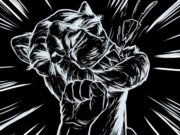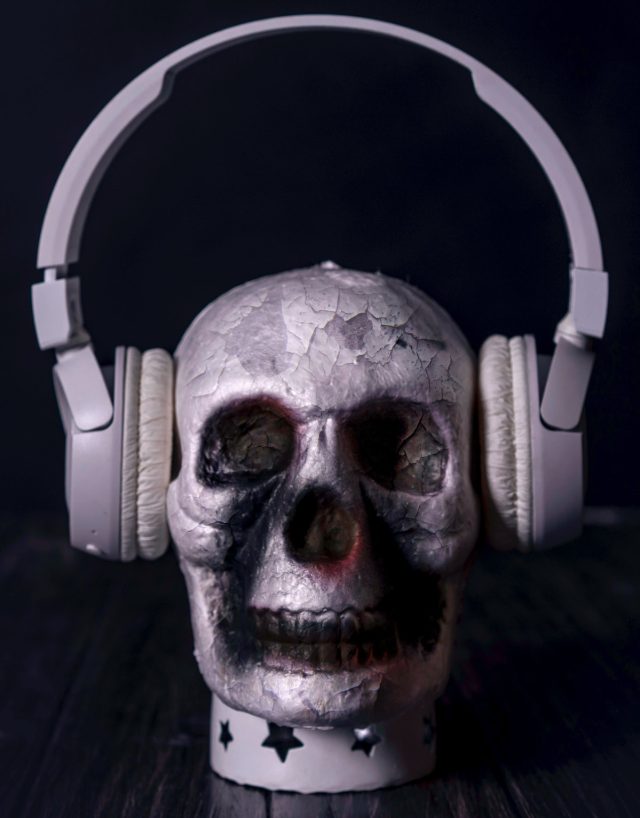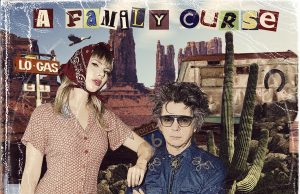 My girlfriend (…she) suggested I go investigate subliminal messaging (…rocks) in popular music. There are two kinds of subliminal messaging, and one is distinctly more common than the other. Those being visual and auditory. While music videos would be the place to find examples of the far more common former, the latter is the one I want to deal with. And before I get into it, let me say I’m not interested in messages recorded and placed backwards in the song. I already wrote a column about that.
My girlfriend (…she) suggested I go investigate subliminal messaging (…rocks) in popular music. There are two kinds of subliminal messaging, and one is distinctly more common than the other. Those being visual and auditory. While music videos would be the place to find examples of the far more common former, the latter is the one I want to deal with. And before I get into it, let me say I’m not interested in messages recorded and placed backwards in the song. I already wrote a column about that.
I’m talking about hidden messages in songs that your brain might pick up without you knowing, and without having to play something backwards. Granted, I’m garbage at anagrams, but I don’t think backwards messages count as “sensory stimuli below an individual’s threshold for conscious perception” — which is the definition of subliminal. Subconscious perceptions.
Subliminal messaging is real — there have been clinical studies using MRIs to demonstrate the brain is indeed affected, as well as how and which part. Auditory stimuli are just not as effective as visual ones. In fact, it’s weak. Which is why most of the stories you hear about subliminal messages in rock music are bullshit.
The way to create subliminal auditory stimuli is through “masking.” As the name suggests, this means hiding the stimulus somehow. Many of us have come to believe that it’s possible to do this to somebody without them knowing, by covering up the “target words” with decoy words or word-like sounds. Or, lyrics. Nope. That’s the plot of the 2001 film Josie And The Pussycats, though.
Three students — Hauke Egermann and Reinhard Kopiez from Hanover University of Music & Drama, and Christoph Reuter at the Institute for Applied Musicology and Psychology — studied this in 2006. In one test, they played a song with a target drink masked within the music and lyrics. In some cases, no target word was hidden, which served as a control group. The study found the test subjects were no more likely to name the correct drink whether there was a hidden message or not. In other words, it was a crapshoot. They might as well have just guessed. “Regardless of the task and age group, no effects of subliminal messages on choice behavior could be observed.”
However, when the test subjects are aware of the stimuli — they know what drink will be mentioned — they are far more likely to pick up on it. But, wouldn’t it be cool if it were true? Right-wing evangelicals sure hoped it was. They were dying to find proof that rock music was the tool of the devil. Most of the stuff you’ve heard about hidden messages in songs is fueled by a desire to make people reject rock music.
In the early ’80s word started spreading that Queen had hidden a message in their hit Another One Bites The Dust: “Some of us smoke marijuana.” Noooooooooo! It can’t be!
I’m convinced. Where’s the record-burning happening?
For the record, the brain does not pick up on backwards messages. You have to play them backwards to hear them. This wasn’t done on purpose. It’s a coincidence — a coincidence that it almost, sort of sounds like “smoke marijuana” if you really want it to.
That’s not subliminal messaging. But, honestly, if Queen wanted to make a drug reference, they just did it. Like in Bicycle Race:
“You say coke, I say ‘caine
You say John, I say Wayne.”
Are there other examples? Damn straight. A biggun. In 1990, Judas Priest were actually taken to court after two young men made a plot to kill themselves with a shotgun two days before Christmas in 1985. They’d been drinking and taking drugs for hours when the suicide pact was agreed upon. The 18 year old killed himself, but the 20 year old survived for three years after blowing off the bottom part of his face.
Upon discovering the pair had been listening to Priest, their parents took the band to court seeking $6.2 million insisting subliminal messages such as “try suicide,” “do it, do it” and “let’s be dead” could be heard in the band’s cover of Spooky Tooth’s Better By You, Better Than Me. The band responded by saying their only hidden message would be “buy more records.” The court ruled in Priest’s favour. But, by all means, judge for yourself:
For about six months I volunteered at the local cable-access station in my hometown of Pembroke, Ont. They had lots of gear, so I set out to finally try to hear the backwards “Here’s to my sweet Satan” message in Led Zeppelin’s Stairway To Heaven. There wasn’t any Internet then, so the only way to check was to physically spin the record backward with your hand. I recorded it to tape and played it backward at regular speed, which you could do with their machines.
Lol. Who knew Robert Plant was a southerner?
There’s no question Hotel California is a dark song, but is it Satanic? I’ve actually never even bothered to look for the supposed hidden message “Satan he hears this. He had me believe.” It’s probably a lot like the others. Maybe Smells Like Teen Spirit is more sinister forwards than backwards. “It’s Saturday”?
Not all the hidden messages are backwards. I remember a friend of mine when I was a kid telling me all about The Beatles’ whole Paul Is Dead storyline. He believed it, or, really wanted to. You know, that Paul McCartney died in 1966 and was replaced by Faul (fake Paul). That’s why he’s standing backwards on the back cover of Sgt. Pepper — the plastic surgery hadn’t yet healed. And that’s why the licence plate on the VW Beetle on the cover of Abbey Road says 28IF. Paul would have been 28 if he had lived. But, that’s also why — if you listen very carefully — John Lennon says “I buried Paul” in the fade-out of Strawberry Fields Forever. Except, he’s actually saying “cranberry sauce.”
• • •
Area Resident is an Ottawa-based journalist, recording artist, music collector and re-seller. Hear (and buy) his music on Bandcamp, email him HERE, follow him on Instagram and check him out on Discogs.









































